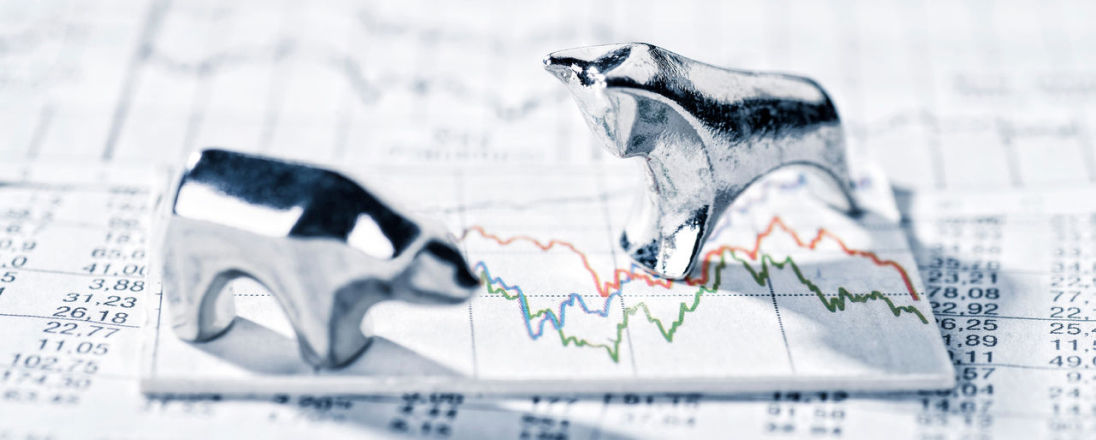How to prepare for a bear market
It’s not as hard as you might think.
Article published: March 14, 2022

No matter how much you’d like to avoid it, if you have investments in the stock market, at some point you are going to have to confront the “B” word – bear, as in a bear market.
The term sends a shudder down the spine of investors who worry that all their hard work and portfolio gains could be wiped out overnight. This fear often causes investors to panic and make rash short-term decisions, the type that can do more damage to their financial future than any bear market.
So the question is, how do you prepare for a bear market?
What is a bear market?
First, let’s start by defining our terms – because there are a lot of misconceptions about bear markets and what they really are.
The definition of a bear market is when securities drop 20% in value from their recent highs. Generally speaking, the S&P 500 is the benchmark for market performance. So when that index is down 20%, it is usually considered a bear market.
But that 20% number is arbitrary. It’s not like a group of economists got together and decided that 20% was a bear market. In fact, nobody really knows who came up with that 20% number. It’s just a generally accepted number, but there’s no hard-and-fast rule that says a 20% is a bear market.
And because financial markets aren’t monolithic, neither are bear markets.
Bulls and Bears
For example, you could have one market sector hitting all-time highs, while another might be down 20% or more. It’s the same with asset classes. One asset class, such as stocks, could be in a bull market, while another, such as commodities, could be in a bear market.
You could also have a scenario in which tech stocks are weak and a tech-heavy index like the Nasdaq composite might drop 20%, while another index like the Dow Jones Industrial Average never gets into bear territory. Sometimes this is referred to as a “stealth” bear market because even though the S&P 500 may not be down 20%, an investor’s portfolio could be down 20% (or more) if it’s overweighted in a certain sector.
How long do bear markets last?
Another important thing to know is that despite being painful in the short term, bear markets are part of the stock market cycle, they don’t last forever, and even though past performance won’t guarantee future results, when they’ve happened in the past, the market has always recovered – and moved higher. Here’s some historical context that might help ease your mind as you prepare for a bear market to happen:
- Bear markets occur regularly. There have been 26 bear markets in the S&P 500 since 1928. But there have also been 27 bull markets – and stocks have generally risen over the long term.
- Bear markets tend to be short-lived. The average length of a bear market is 289 days, or about 9.6 months. That’s significantly shorter than the average length of a bull market, which is 991 days or 2.7 years.
- Bear markets have been less frequent since World War II. Between 1928 and 1945 there were 12 bear markets, or one about every 1.4 years. Since 1945, there have been 14 – one about every 5.4 years.
- Stocks lose 36% on average in a bear market. By contrast, stocks gain 114% on average during a bull market.
- Most importantly, half of the S&P 500’s strongest days in the last 20 years occurred during a bear market. Another 34% of the market’s best days took place in the first two months of a bull market – before it was clear that a bull market had begun.

How to invest in a bear market
This last point about how to prepare for a bear market is key because investors who are worried about their portfolio losing value will often try to time the market in an attempt to avoid the “bear.” But this can be a big mistake because by being out of the market – even a bear market – you risk missing some of the strongest up days.
In fact, Bank of America recently summarized stock market data going back to 1930 and found that if investors were out of the market for just 10 of the best days each decade, their total return would be significantly lower than investors who stayed fully invested.
The other problem with trying to time the stock market is that once you get out, how will you know when to get back in? Think of all the investors who sold near the bottom of the Covid-19 crisis, or the financial crisis, who never got back in the market – and missed out on any gains.
The truth is, one of the ways to help prepare for a bear market is to have a diversified portfolio, one that owns a wide variety of investments and asset classes, and then rebalance that portfolio as needed.
This is because markets move in cycles, which means certain sectors can be rising while others are falling. The same dynamic applies to different asset classes. A well-diversified portfolio owns “all the market, all the time,” and when you actively rebalance that portfolio, you sell some of the assets that are currently overperforming and use the proceeds to buy other assets that are currently underperforming in hope of their next upcycle.
Even though your portfolio may fluctuate in the short term during a bear market, investing in a diversified portfolio with a long-term approach may help minimize volatility and can help you stay on track to meet your financial goals. If you’re looking for independent financial advice about how your portfolio is diversified to prepare for a bear market, contact an Edelman Financial Engines advisor.
Investing strategies, such as asset allocation, diversification, or rebalancing, do not assure or guarantee better performance and cannot eliminate the risk of investment losses. All investments have inherent risks, including loss of principal. There are no guarantees that a portfolio employing these or any other strategy will outperform a portfolio that does not engage in such strategies. Past performance does not guarantee future results.
An index is a portfolio of specific securities (common examples are the S&P, DJIA, NASDAQ), the performance of which is often used as a benchmark in judging the relative performance of certain asset classes. Indexes are unmanaged portfolios and investors cannot invest directly in an index. Past performance does not guarantee future results.




